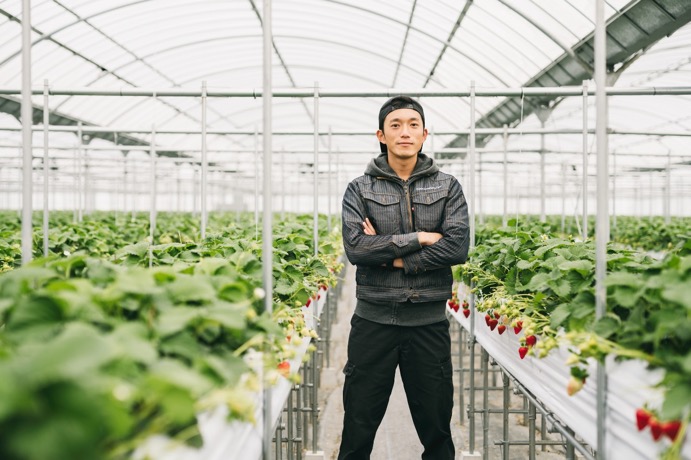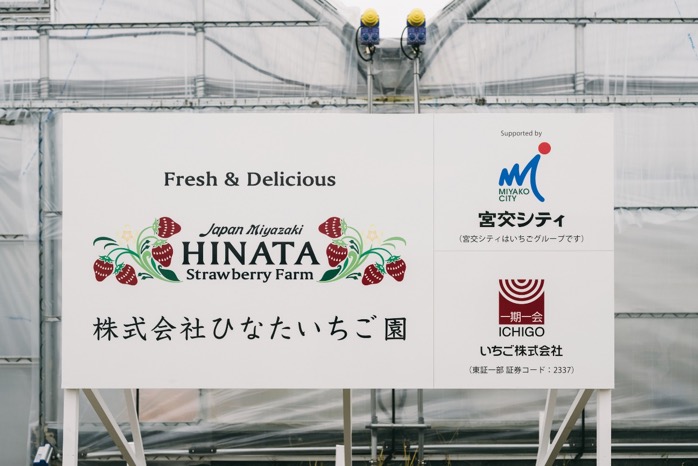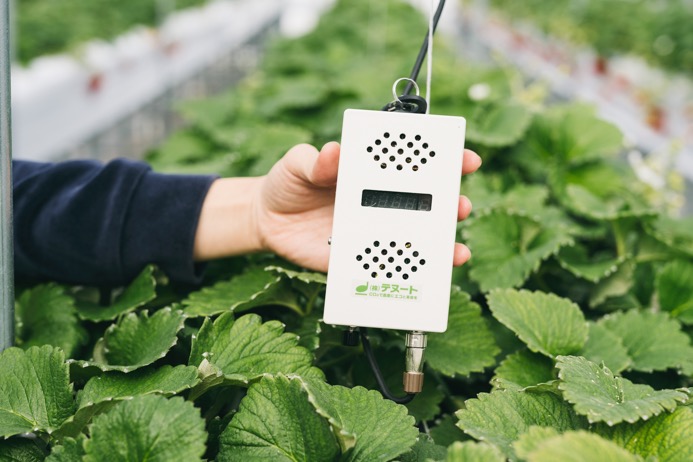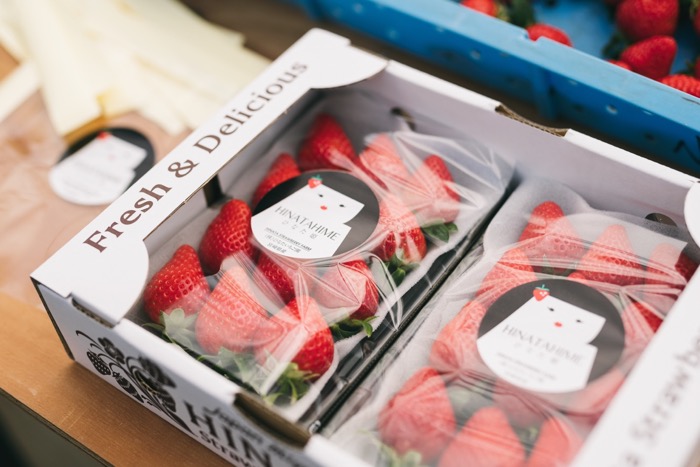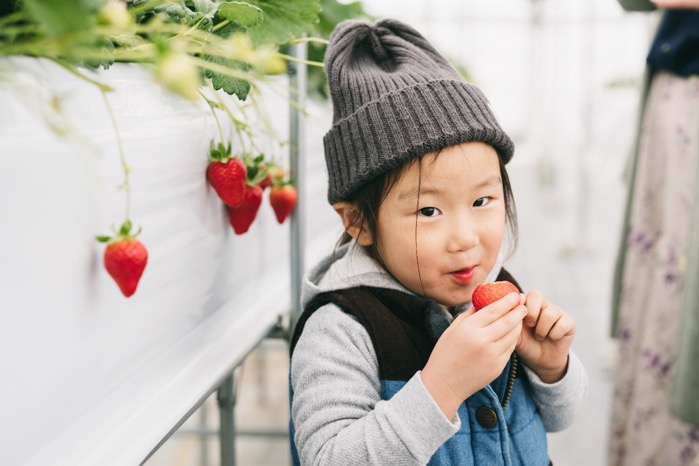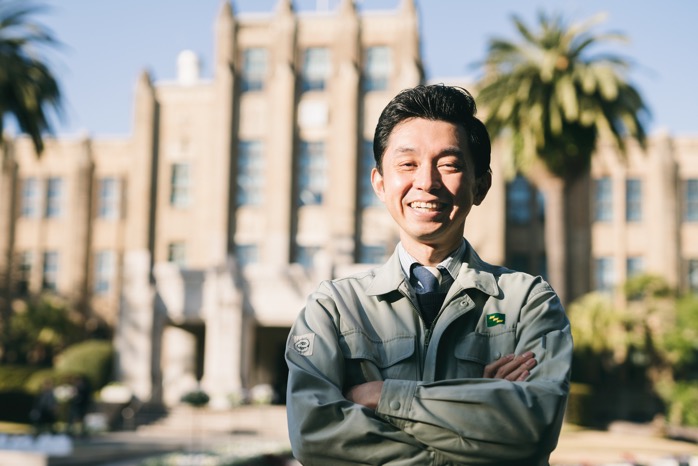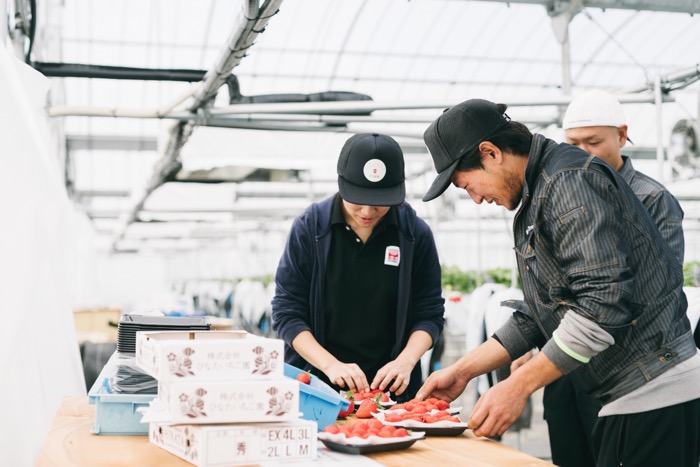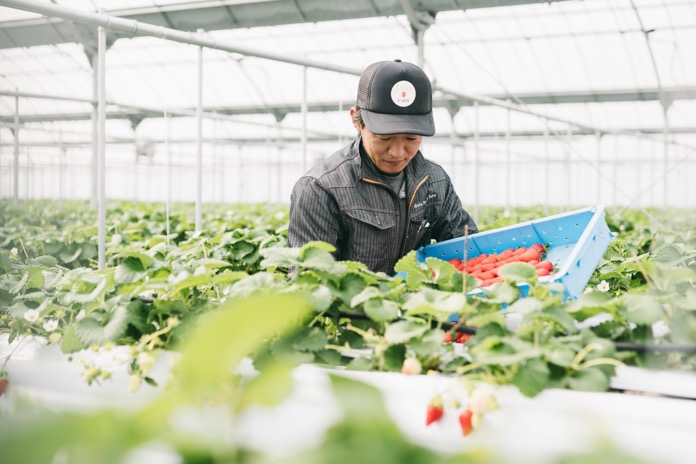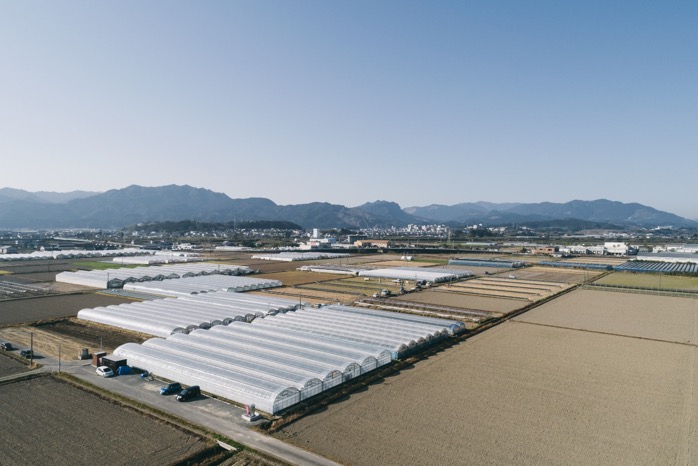
 Story
Story
The Smart Greenhouses of Miyazaki
Using IoT Technology to Help a Young Farmer Realize His Dreams
Just off a palm tree-lined highway, near a stadium used for spring training by professional Japanese baseball teams, stand the greenhouses of the Hinata Strawberry Farm. They don’t look exceptional, but the difference lies within: These are smart greenhouses, wired with a network of sensors from the IoT, or Internet of Things.
Unlike traditional greenhouses, these wired greenhouses take pinpoint data readings, which they use to make customized adjustments in the amounts of water, heat, and carbon dioxide reaching each plant.
The results are evident in larger harvests, and the plump red strawberries that can grow to the size of a child’s fist. The most perfectly shaped are carefully selected and placed in boxes of 18 each, which sell for 1,500 yen, or about US$14, at supermarkets here in Miyazaki, a sunny, rural prefecture located on Japan’s southernmost main island of Kyushu.
Those same strawberries could fetch almost twice that price in Tokyo, and still more outside Japan. Reaching those distant markets is the ambition of Ippei Nagatomo, the 32-year-old owner of Hinata, who wants to turn his strawberries, which he calls Hinata Hime, or ‟Sunshine Princesses,” into a brand name.
Ichigo is helping Nagatomo achieve his dreams. Last year, the company financed and built two smart greenhouses, at a cost of 30 million yen each, which it leases to the young farmer. To limit the financial burden and risk, Ichigo reduces rent during the half year when the greenhouses are not producing fruit, from July until December.
Ichigo will also help him sell his Sunshine Princesses by tapping into its nationwide network of customers and tenants.
‟Ichigo is a company that supports me and my goals,” said Nagatomo, who plans to export strawberries to Southeast Asia, and wants to expand his farm to ten times its current size. ‟Ichigo listens to what I want to do and says, ‘Let’s make that happen together!’”
The smart greenhouses of Hinata farm are the first foray into agriculture by Ichigo, which built them last year by combining its knowhow as a sustainable infrastructure company with the IoT technology provided by a partner company, Tenuto.
Tenuto’s system, called Conductor, helps produce more and bigger fruit by speeding photosynthesis, the process by which plants turn light into energy. An earlier version of the system installed in 2017 helped Nagatomo raise production by 20 percent.
Agricultural officials say raising productivity, and thus farmers’ incomes, is essential for reviving Japan’s 9.3 trillion yen farming industry, which has fallen into a long slump. Despite being blessed with rich soil and ample rainfall, Japan produced just 38 percent of the food that it consumed on a calorie basis in 2017 – the lowest amount ever, according to the Ministry of Agriculture, Forestry, and Fisheries.
Alarmed at the decline, political leaders in Tokyo have eased regulations to make it easier for farmers like Nagatomo to create larger and more efficient farms, and also to team up with companies from other industries, which had long been barred from entering agriculture.
‟Companies like Ichigo have the capital, knowhow, and networks to empower entrepreneurial farmers like Ippei,” said Takafumi Kaneko, an official in Miyazaki’s Department of Agriculture who heads efforts to support new farmers. ‟Combing these strengths into a new business model is one way to reinvigorate agriculture in our prefecture.”
While growing up, Nagatomo says he actually did not want to follow in the footsteps of his father, a strawberry farmer. He left his family farm in Kibana, a village on the fertile coastal plain between the Pacific Ocean and Kyushu’s mountainous interior, to attend trade school in the island’s largest city of Fukuoka, where he later found a job at a major railway company.
He said he returned to Kibana after realizing he missed the clean air, and the chance that farming offered to be one’s own boss. He is a rarity, however. Few in his generation have come back to take over family farms, as attested by the village’s growing number of empty greenhouses, he said.
‟More young people would want to do farming if they knew they could make a decent living,” said Nagatomo. ‟I want to demonstrate that they can.”
Ichigo is working to help more farmers like Nagatomo reinvigorate Japanese agriculture. In January, it purchased seven greenhouses in Miyazaki that it will convert into smart greenhouses and lease to other farmers for growing tropical fruits like mangos and lychees.
‟Ichigo exists to serve society,” said Minoru Ishihara, executive vice president and chief operating officer at Ichigo who is in charge of the smart agriculture business. ‟Helping Japanese farmers and their communities to bring healthy and delicious fruit to the world is something that gives us meaning.”


